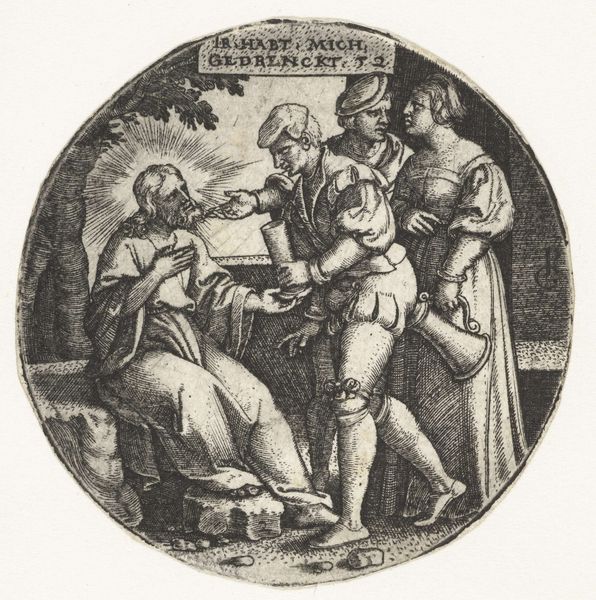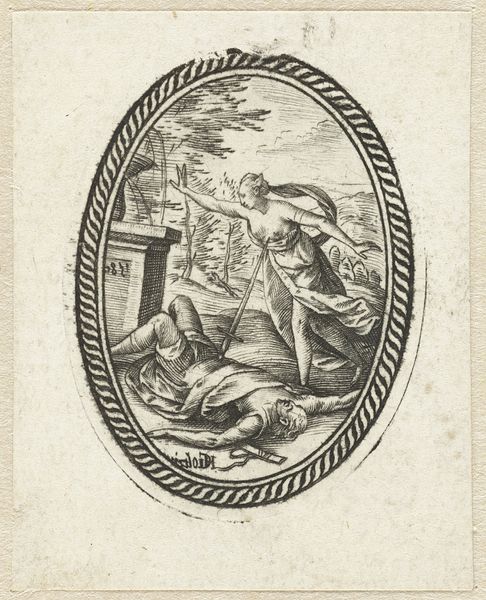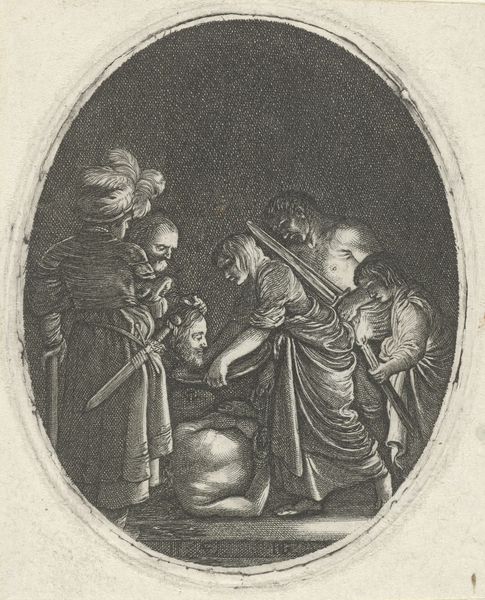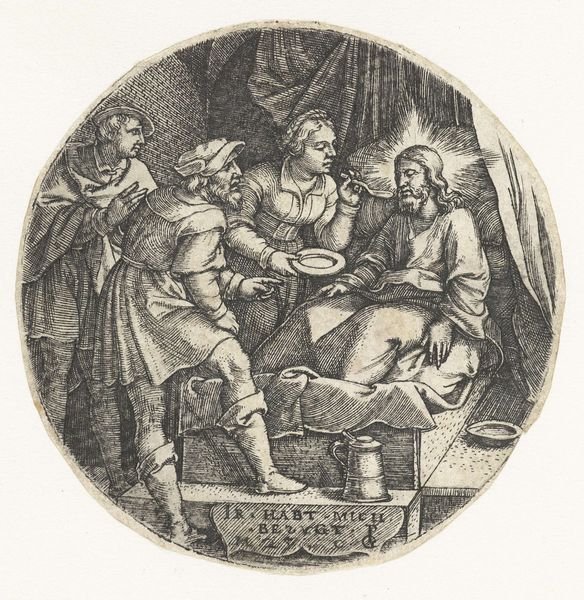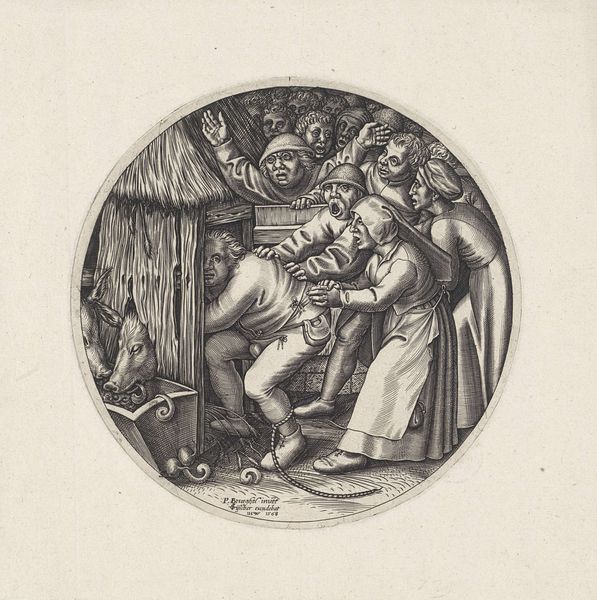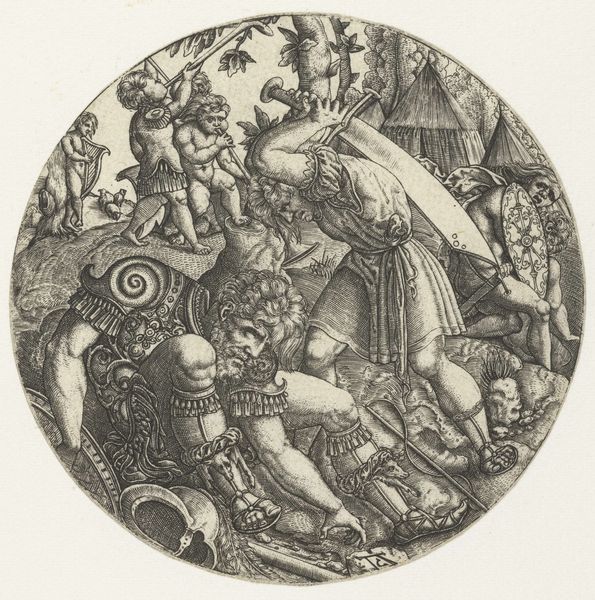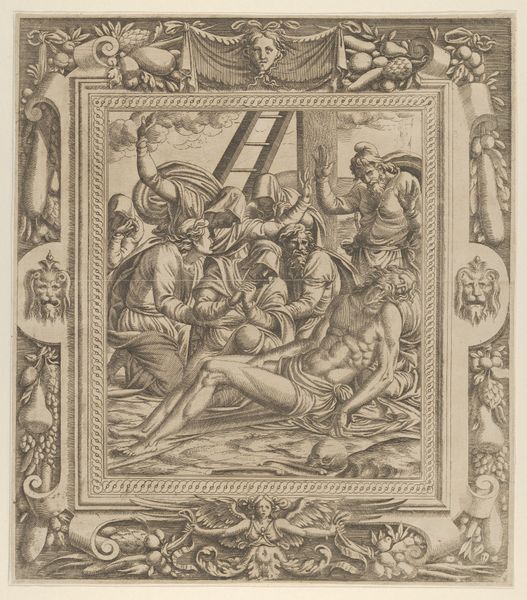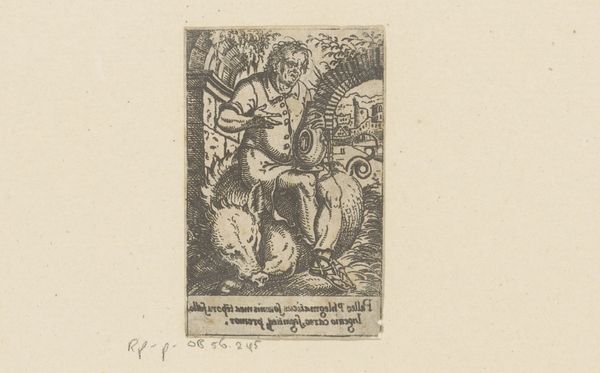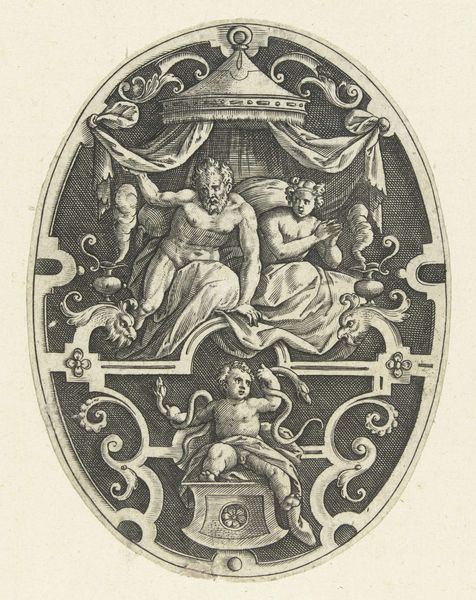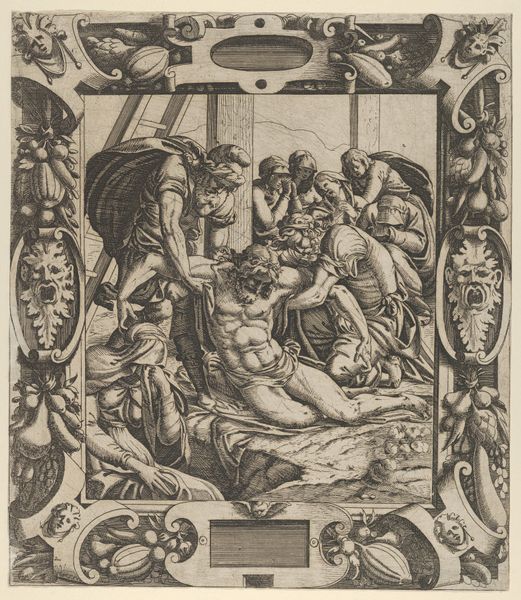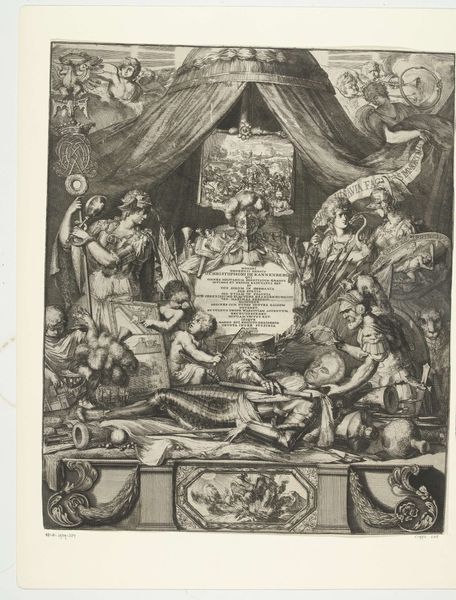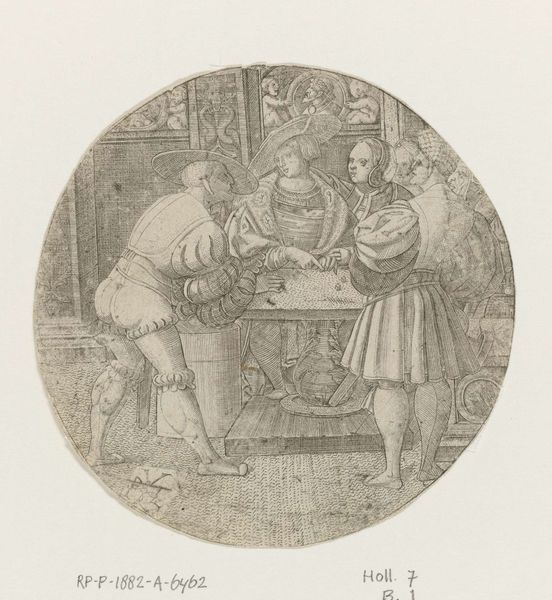
print, etching, intaglio, engraving
# print
#
etching
#
intaglio
#
old engraving style
#
figuration
#
11_renaissance
#
history-painting
#
engraving
Dimensions: height 86 mm, width 64 mm
Copyright: Rijks Museum: Open Domain
Curator: This is a striking 16th-century print held here at the Rijksmuseum, attributed to Monogrammist AC. It’s entitled “Tamar onteerd door Amnon,” or "Tamar Dishonored by Amnon" for those of us without the Dutch touch. The medium is intaglio, specifically an etching and engraving. Editor: It's small but intense. You feel the struggle, the raw energy, just in the way the figures are intertwined. The cross-hatching adds such a dramatic weight, doesn’t it? Curator: Absolutely. The print depicts a disturbing scene from the Bible, where Amnon violates his half-sister Tamar. This moment captured here is pivotal within a much larger story that underscores political intrigue and familial discord. Consider the dynamics of power inherent in artistic representation. Editor: I’m really struck by the bodies here. They’re these monumental, almost bulging forms rendered through labor-intensive techniques of engraving, suggesting a deep material engagement with the act of image production itself. It asks, 'How does making influence the perception of this event?'. Curator: Precisely. Prints like this one circulated widely. How did early modern audiences perceive this violation? Was it didactic or merely sensationalist? Such graphic representations shaped social attitudes and moral discourses of the era. Editor: And consider the labor – the precise movements required to carve those lines. The materiality of the copper plate itself holding this horrible story and then disseminating it—it's a dark process that needs to be talked about. It moves beyond art and starts talking about what it is like to do such painstaking engraving with its history of skill transfer and craft embedded with patriarchal ideas about female subservience. Curator: Indeed. We see a reflection of its context. This work reveals the interplay of aesthetics, commerce, and social commentary and also its place as propaganda. It wasn't simply about aesthetics but influencing thought. Editor: A grim reminder that materials, processes, and artistic choices can profoundly influence a viewer’s understanding of power. The touch of the hand, here, is also a fist. Curator: Well, thanks for providing a closer view. It’s clear how vital prints such as these are in revealing social and political landscapes, providing avenues into both understanding and, indeed, reassessing past assumptions. Editor: Yes, it serves as a sober testament that our analyses are always inextricably bound with labor, power, and the politics embedded within making itself.
Comments
No comments
Be the first to comment and join the conversation on the ultimate creative platform.
